Environmental awareness at LECHUZA
LECHUZA (pronounced le-choo-za) is Spanish for “owl”. Just like the wise and watchful owls, the LECHUZA irrigation system watches over your plants and ensures that they are well looked after all year round.
-
- How environmentally friendly is LECHUZA?
Environmentally-conscious and resource-conserving thinking and acting is an essential component of the long-term development of our company. We take up the challenge and the responsibility not to endanger people or the environment on our way to a successful future. Our environmental policy, implemented by owners, management and employees, provides the basis for this.
LECHUZA planters are made in Germany and are 100% recyclable. With the successful certification according to DIN EN ISO 14001, a cross-industry recognized certificate, we have introduced a joint efficient environmental management system, which encompasses all levels of the company, starting with the development, production and distribution of our products.
LECHUZA planters can be used both indoors and outdoors.
Indoors: When used indoors, the red sealing screw in the bottom of the container must be hand-tightened. Please check the tightness of the screw before using it for the first time and tighten if necessary.
Outdoors: Remove the sealing screw on the outside so that excess water can drain off. In the case of column vessels, the screw in the plant insert must also be removed.
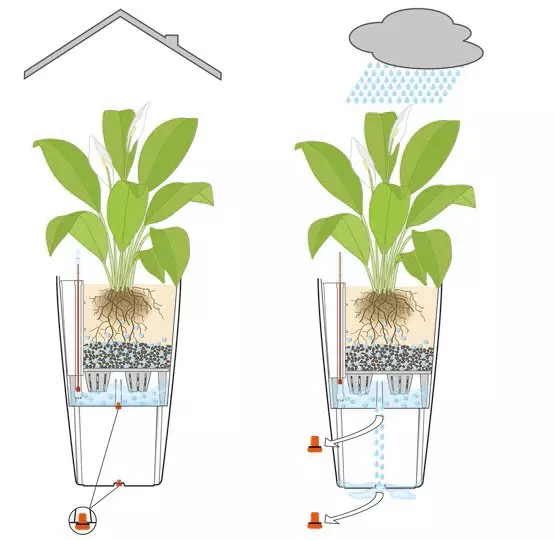
LECHUZA planters are mainly made of polypropylene (PP). The premium containers are additionally painted to a high standard. Also, LECHUZA accessories, the plant inserts including carrying handles and the irrigation system are mostly made of PP.
The lacquered table pots and the lacquered handle frames of the removable plant inserts are made of acrylonitrile-butadiene-styrene copolymer (ABS). The transparent scale indicator of the water level indicator is made of polycarbonate (PC).
LECHUZA Irrigation System
Planting in LECHUZA
PON und TERRAPON
To switch from the hydro-system to a new substrate is quite stressful for plants, considering the different climate, especially the water balance at the root and the type of plant.
In normal potted soil, it is unlikely that the plant will be able to get used to it. LECHUZA-PON granules will make the transition much easier. First, remove the clay substrate from the hydrophilic plant as thoroughly as possible without damaging the roots. If any damage occurs, cut back defective roots with sharp, clean plant scissors. Place your plant in your LECHUZA container at roughly the same height where it felt comfortable before.
An important tip: cut your plant back up to a quarter. This reduces leaf loss, but unfortunately does not completely prevent it. The pruning helps your plant to get used to the new environment better and faster.
Further recommendation: Water your plant initially only from above on the granules and at short intervals. Water little so that no water accumulates in the reservoir – this cannot absorb your plant yet.
Check your plant regularly for pests and diseases, as many plants are particularly sensitive during the adaptation period. It will take several months for the roots to penetrate into the water reservoir, and then the plant can supply itself. Fill the water reservoir for the first time after 12 weeks. The water level indicator does not have to be full, it is sufficient to first use one third of the reservoir. Now observe whether the red needle sinks in the next days. If this is the case, your plant has grown into the water reservoir. Also observe carefully whether your hydrophilic plant has become completely accustomed. It may still need watering from above on the PON.
In principle, LECHUZA-PON shouldn’t allow for mould to build up on the surface, as it does not consist of organic material – but dead roots or leaves can be a breeding ground for fungi in high humidity and moist substrate surfaces. The frequent occurrence in the autumn and winter months is related to the higher relative humidity indoors.
The emergency plan
Remove a layer of mould-monitoring plant substrate approx. 5cm thick from the surface. Wash it thoroughly and boil it in hot water. Then, put the dried substrate back into the planter. It is important that no dead plant parts remain in the substrate and that the plant is kept slightly drier. You can also prevent the formation of mould by immediately removing and disposing of fallen leaves, dead or diseased plant parts.
Accessories
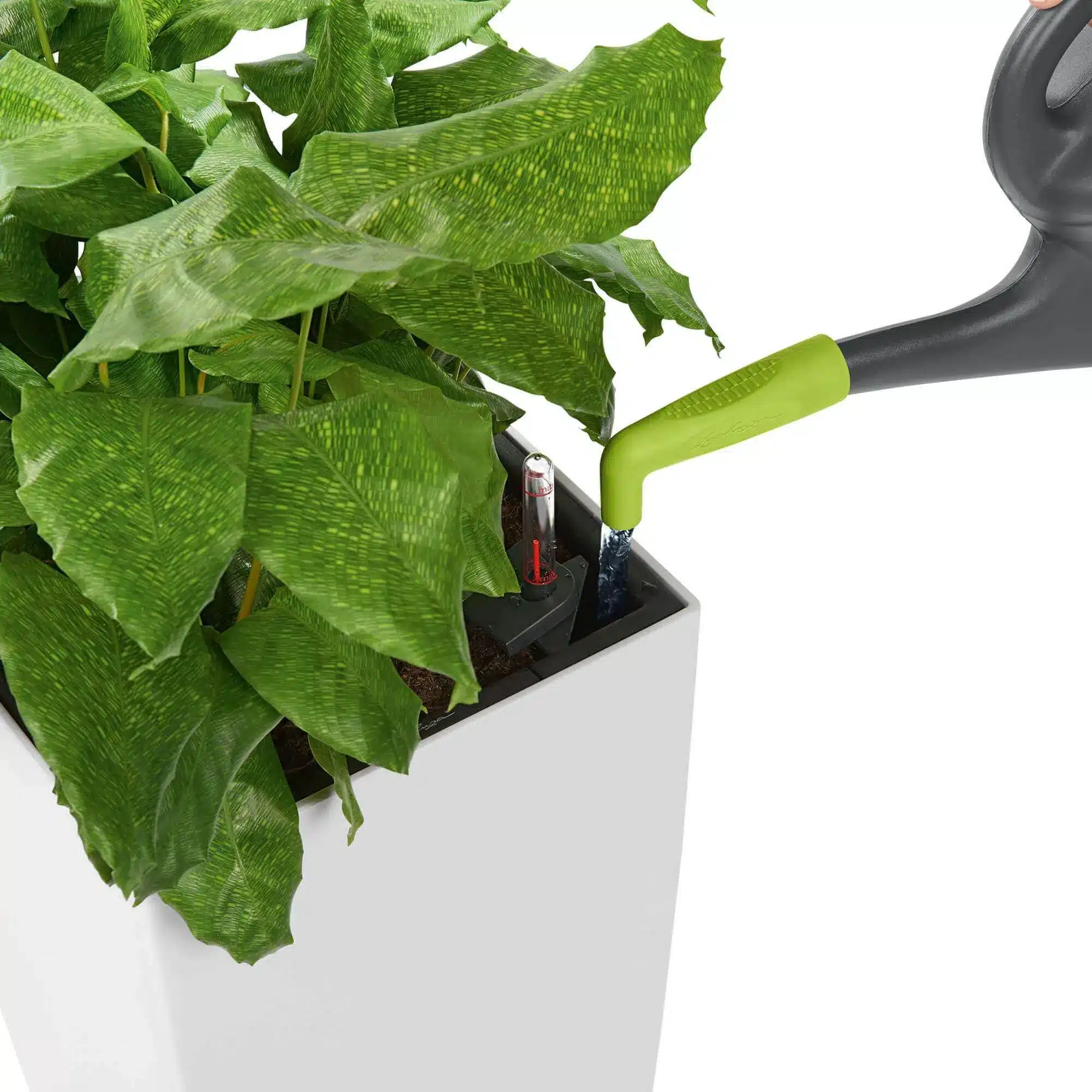
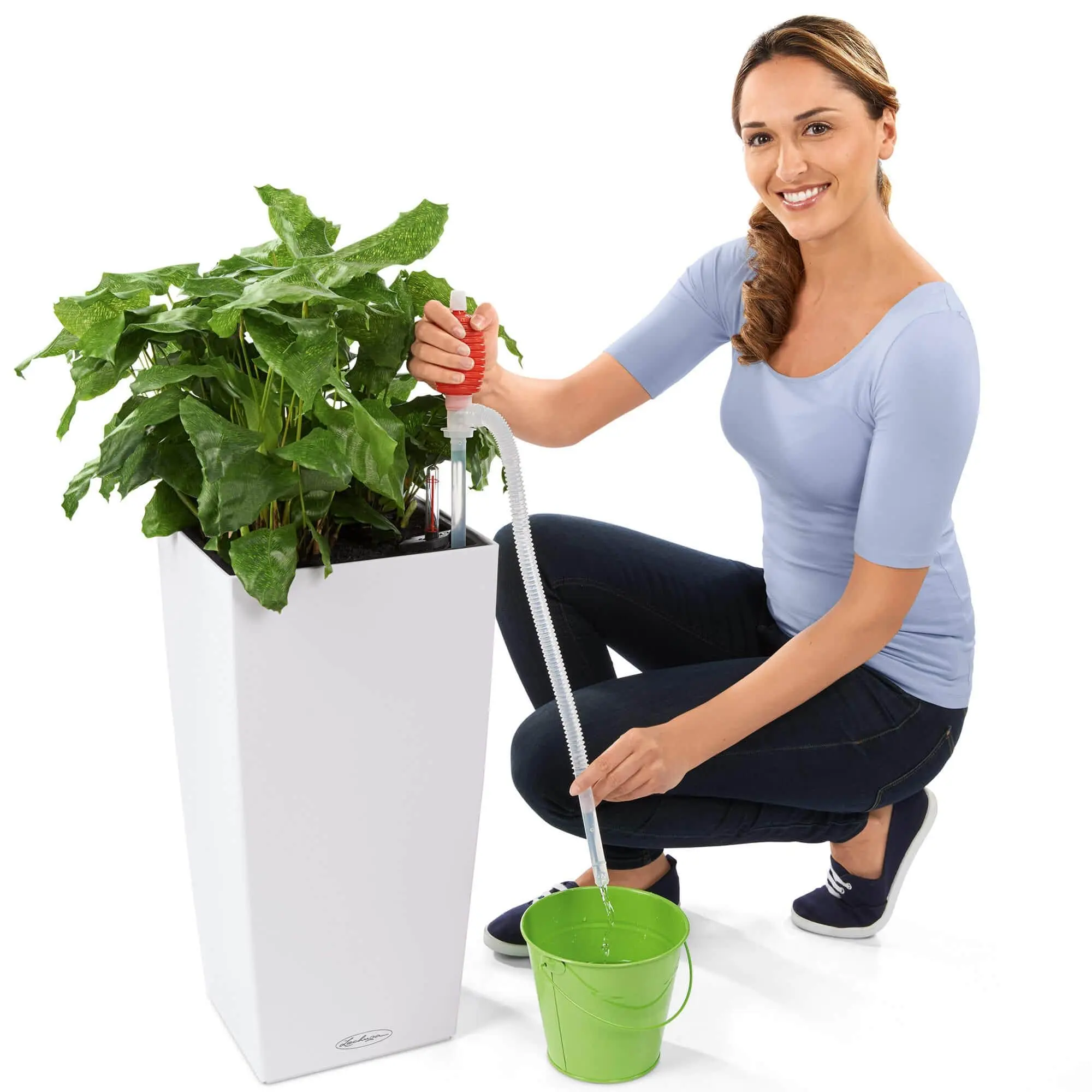
Plant care tips
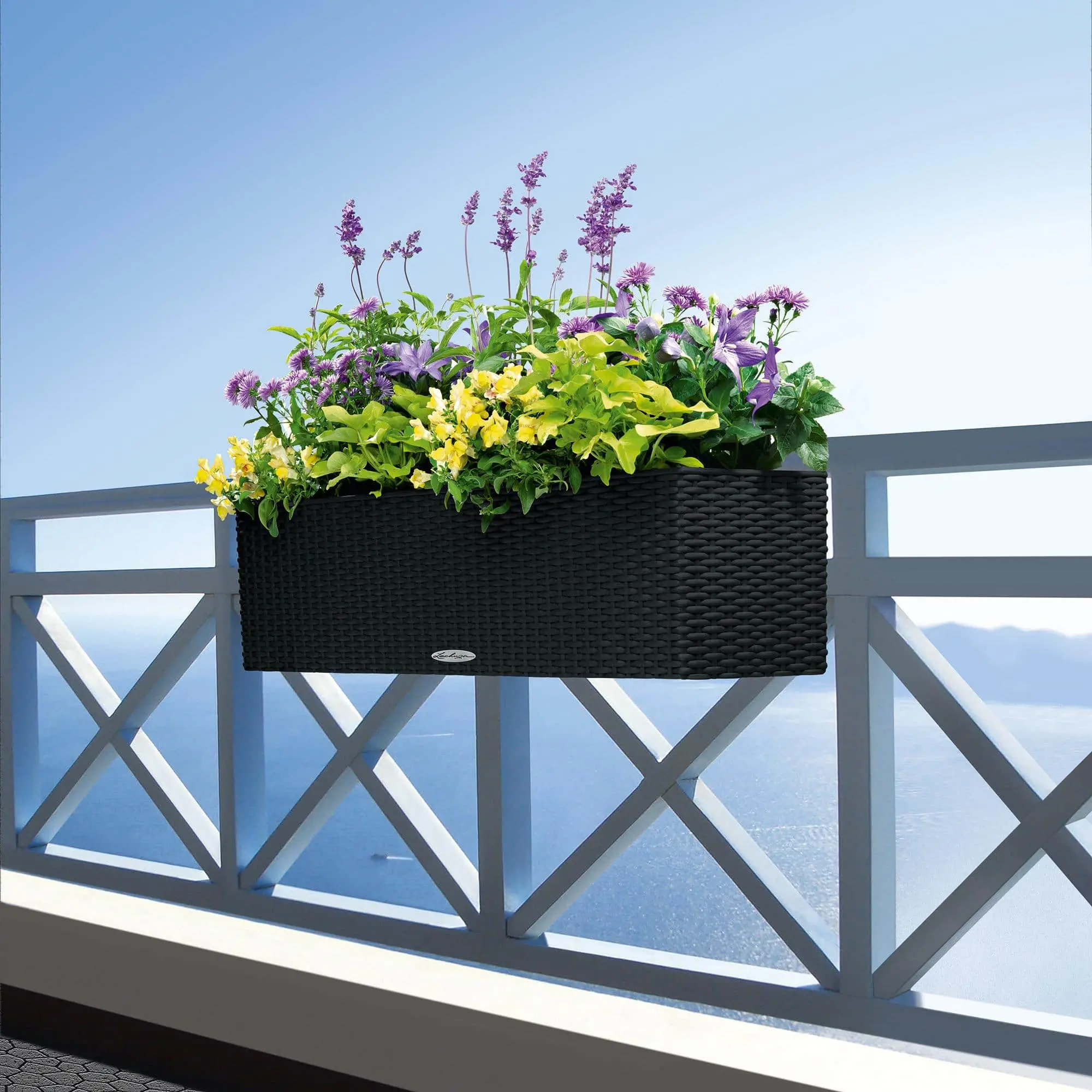
It is quite easy to grow annuals yourself if you follow the instructions on the seed packets. Start growing on the windowsill in early spring and then move them into the plant container. Only when there are no more late frosts from the middle or end of May can you put the plants outdoors. Preferred goods from the garden trade may stand outside earlier, but on very cold nights they should still be protected.
LECHUZA planters are the ideal partner for outdoor planting with balcony flowers. The specially designed balcony box BALCONERA with matching balcony box holder as an accessory can be attached to walls and railings. LECHUZA planters have a sealing screw for rain overflow, which must be removed. The watering distances depend on the location and growth of the plants. In midsummer, the water level indicator must be checked every day at high temperatures; a finger test in the substrate provides additional safety. With a full reservoir, it is unlikely that an irrigation course will be necessary every morning and evening. Depending on the size of the container and the density of vegetation, a cycle of one to five days is possible, with cloudy skies and precipitation correspondingly longer. After a while, you will become familiar with how much water your plants drink.
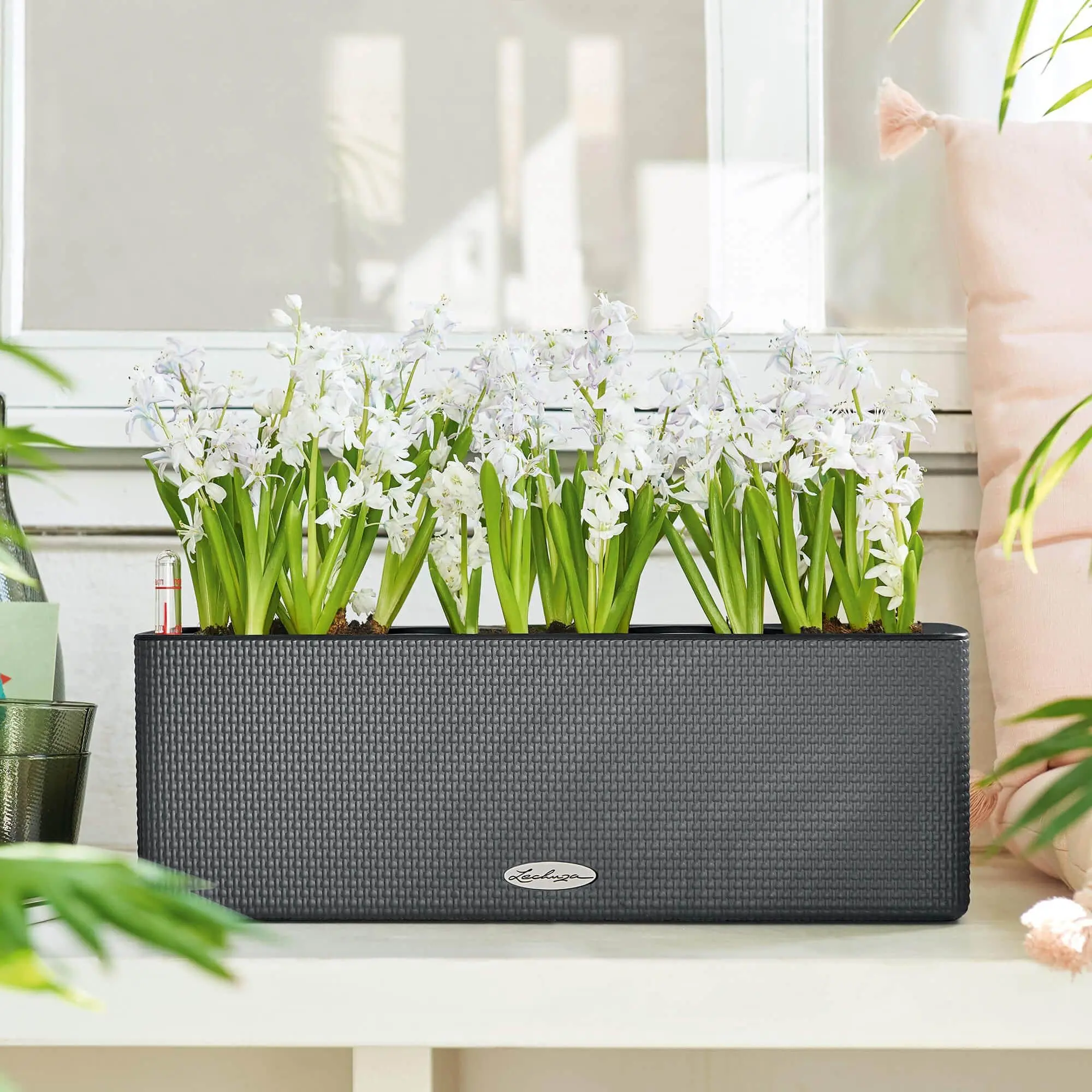
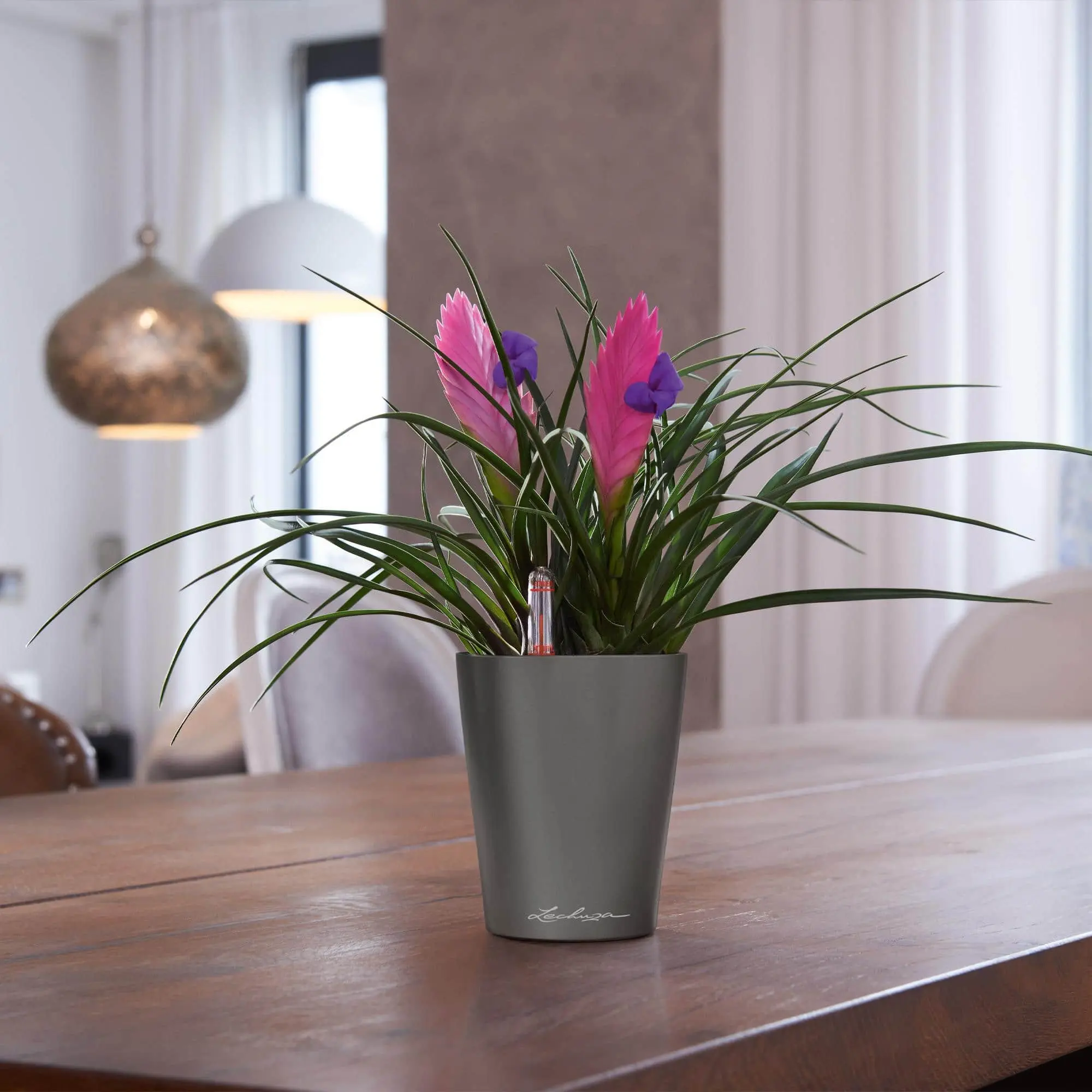
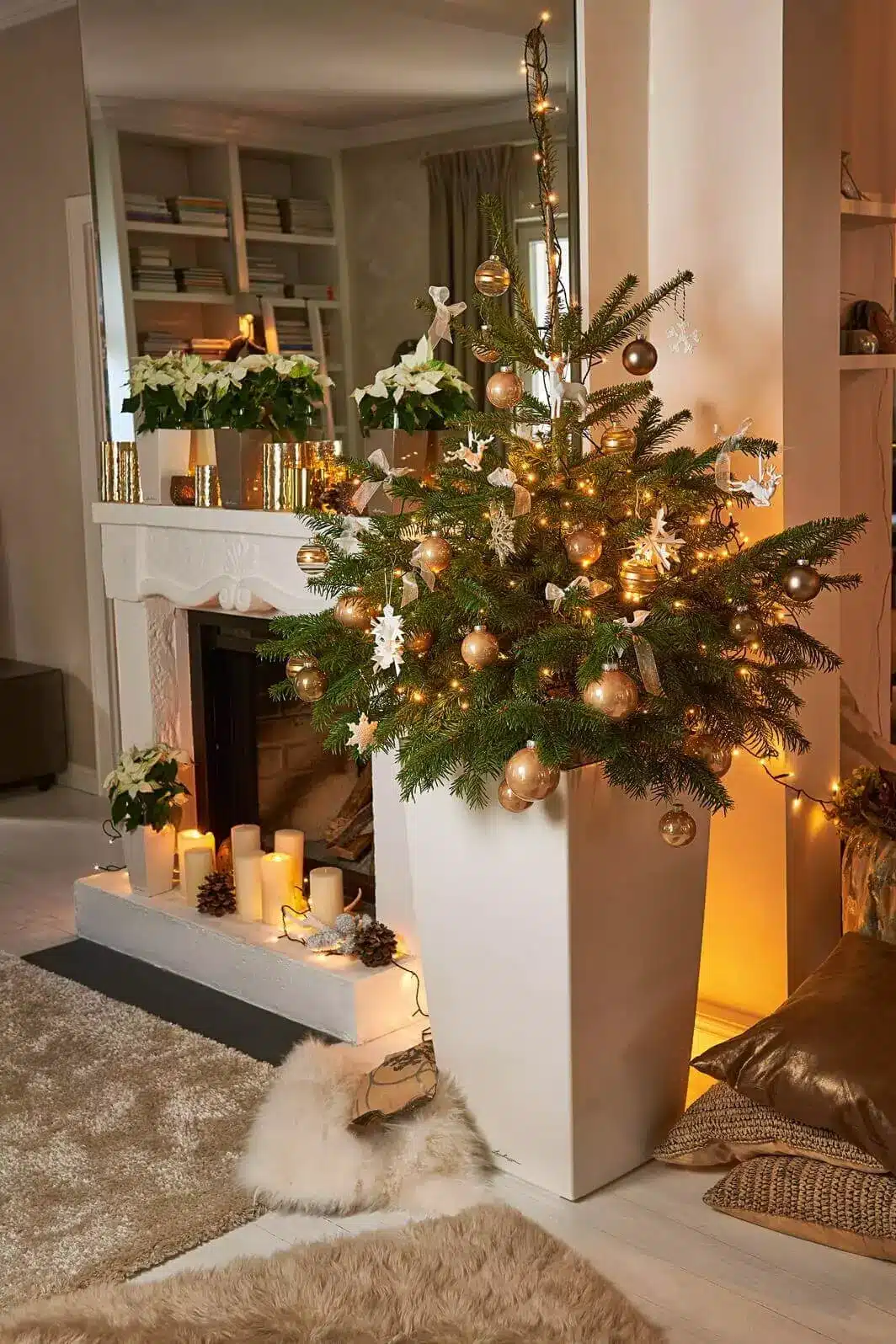

Poinsettias beautify your home all year round. They are especially beautiful in the LECHUZA table pots. And thanks to the LECHUZA watering system, your joy will last long after the party. When buying, you should pay attention to a few things: the poinsettia should be abundantly covered with healthy, green leaves under the coloured star of the bracts. Yellowish leaves indicate poor care. Do not buy plants that have been outdoors – poinsettias hate the cold and react to a cold shock after a few days by losing their leaves. Also pack the plants well for the way home.
How to maintain your poinsettia: make sure you keep it in a bright, draught-free location with temperatures of around 20°C. The LECHUZA irrigation system prevents overwatering, which is a particular problem for poinsettias. Do not fertilise the poinsettia during flowering.
Planting and care of fruits and vegetables in TRIO
Simple and indestructible
- blueberry and vaccinium varieties
- broad beans
- runner beans
- raspberries
Proven with little maintenance effort
- sugar snap peas
- courgette
- stick and bush beans
- blackberries
More maintenance effort, but worth it
- tomatoes
- aubergines
- cucumbers
- pumpkin
- paprika and pepperoni
- chili
- kiwi
- Andean or Cape gooseberry (Physalis)
- balcony melon
For connoisseurs with green thumb
- vegetable corn
- figs
- all citrus plants
Early spring brings the first plant seeds. Sowing is best on the sunny windowsill in small plastic pots (5-7 cm) or in individual cells from the garden centre. Remember to attach small labels to avoid confusion. To avoid planting young plants in the spring, purchase young plants which have been grown in advance, or hire a trusted gardener to carry this out.
When growing, always pay attention to the instructions on the seed packets and, of course, to the requirements of the plant with regard to substrate, location, fertilisation and water requirements. For annual plants, it is best to use good quality pot plant soil. For permanent planting, it is worthwhile to use the LECHUZA-PON plant substrate.
To support your plant as it grows, simply use the plant clips included with the trellis for TRIO Cottage. Make sure to use them to stabilise your plant, but do not tie it too tightly. With self-climbing plants, you should regularly check the shoots and use the plant clips to guide them in the right direction.
Many plants prefer dry foliage when watering. Until the plant has grown into the water reservoir and can feed itself, take care to water the young plants carefully. A finger test in the substrate reduces the risk of wetting and leaf rot.
Watch out for pests and snails – young vegetable plants are particularly susceptible. If the plant becomes too large, separate from individual shoots if necessary. This promotes other shoots as well as flowering and fruit formation. Side and fruit shoots can become too heavy for the plant – tie them down in a supportive way so that they do not break.
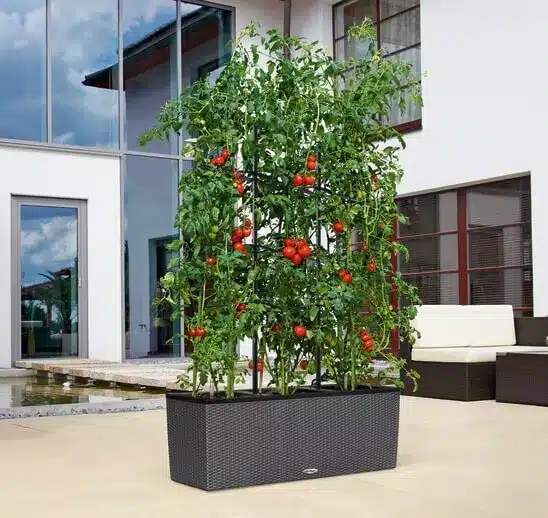
One of the most popular garden vegetables is the tomato, Latin Lycopersicon, which is on the market in many varieties, growth heights, fruit sizes and taste variants. It comes from Central and South America and is related to the Solanum family, which also includes aubergine and potato.
Tomatoes love fertile, permeable soil. Special tomato and vegetable soil is available in specialist shops. From May onwards, there is a huge supply of early-growing young plants on markets and in nurseries. There are stick and bush tomatoes in different growth forms. If you want to harvest unusual varieties or enjoy sowing, you can place pots with seeds on a sunny windowsill from April. On the seed bags, you will find more detailed information on the time and method of sowing. Important: keep the substrate moist and turn the sowing pots regularly so that the plants do not grow at an angle to the light.
Plant one strong seedling per TRIO Cottage plant insert. First, bind the plant with thin wooden or bamboo sticks. From mid-May (when frost is no longer a threat) the tomatoes can be taken outside. Attach the plant to the TRIO Cottage trellis as soon as it is large enough. If necessary, shorten the plant a little so that not too many shoots remain. One cut favours the other shoots and thus also the fruit development. This means that more sunlight reaches the leaves and fruit and that no diseases can spread. The soil should be moist, but not too wet.
As soon as small fruits form, it is best to supply the plant with tomato liquid fertiliser every two weeks. Unripe fruits are poisonous, as with almost all nightshade plants! Many tomato varieties are largely resistant, but you should check your shrub regularly for pests and diseases.
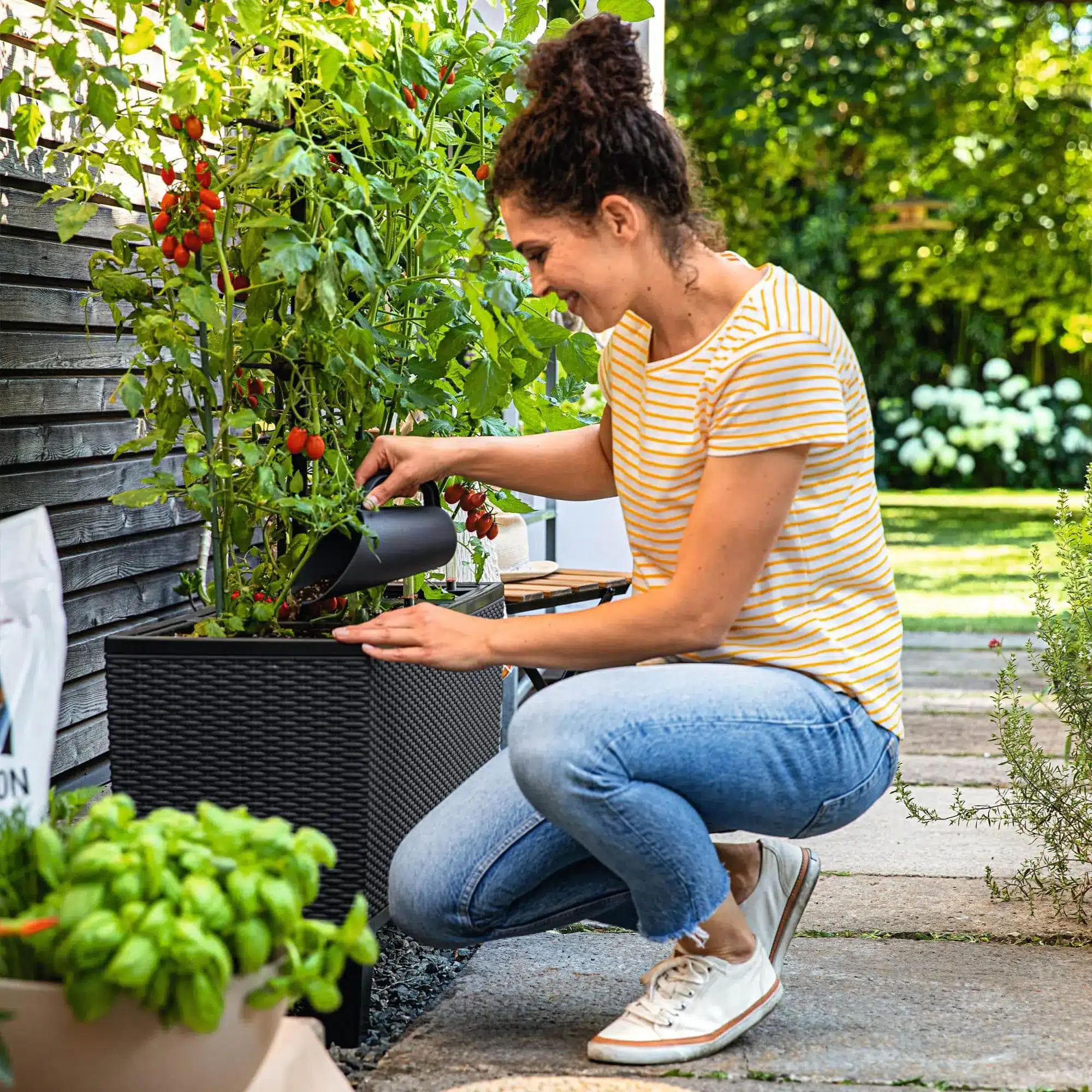
Tips for hibernating winter-hardy tub plants
Potted plants which are frost-proof should remain outside during the cold season, as the cold months are often important for the further development of the plants. Nevertheless, they should be adequately protected, as a plant container cannot offer as much protection from the cold as the ground. Potted plants get frostbite at the roots more easily or suffer from frost dryness.
Too much sun can become a danger in the winter, because the evaporation of the plant is promoted by sun irradiation and frozen root balls cannot supply then enough water. Especially evergreen plants are endangered, such as cherry laurel, dwarf medlar, bright medlar, (Cotoneaster, Photinia), rhododendrons, box, grasses and bamboos as well as all conifers.
repare your plants for the frosty months by completing pruning and fertilisation by the end of August, then the shoots will be completed in time and the mature roots and shoots will be better prepared for the winter.
The ideal place to spend the winter is protected from wind, rain, snow and direct sunlight, such as a covered terrace. If several plants are close together, they will keep each other warm. Pack your LECHUZA containers with jute, felt or fleece fabrics, straw, reed or coconut mats to protect the roots from excessive temperature fluctuations.
A dry layer of leaves, straw, fir twigs or mulch slices made of coconut fibres protect the plants from drying out and keep away rain. Make sure to use only air-permeable materials when covering. To protect your potted plants from ground cold, simply place the planters on wood or polystyrene.
Even in winter, evergreens evaporate a lot of water via leaves and needles, which must be replenished. In particularly frosty temperatures, your plant will no longer be able to supply itself via the water reservoir of the LECHUZA container, which is why, in winter, you only pour water from above onto the granules or the plant soil and adjust the amount of water to the consumption of your plant. Please water only on frost-free days and in stages, this will help your plant survive the cold months.
Enemies of plants
Even if you have planted completely in the almost sterile substrate LECHUZA-PON, your plants may be attacked by pests. Especially dry indoor air makes many plants susceptible. For this reason, we recommend using a combination agent against various pests as a preventive measure both for indoor plants and for balcony plants that move indoors for the winter. If your plants are close together, you should treat all plants as a precaution. If you are not sure which pest is causing trouble on your plant, ask your trusted gardener and take an infected leaf with you.
If your plant is infested with lice, remove the plant insert from your LECHUZA container and rinse it thoroughly under running water. Also remove all infected parts of the plant. Then, treat your plant with a crop protection spray, stick or granulate. To do this, spray the substance directly onto the plant or simply insert the stick into the root ball. Before you sprinkle the plant protection granulate onto the PON plant substrate and work it in, water dry root balls from above, if necessary. In any case, read the enclosed instructions for use before using PON for the first time. Also note that if your plant bears fruit, you should not eat it for a while.
Fungus gnat and white flies like to lay their eggs in moist potting soil. The planting substrate PON can also serve as a distribution centre if it is kept permanently too wet. Yellow stickers or yellow boards, to which the pests simply stick, help against flying fungus gnats. Use a suitable watering agent against the root-damaging larvae. Add the liquid plant protection to the watering water and fill the water reservoir of your LECHUZA plant container with it via the practical filling shaft.
In dry air, spider mites particularly like to lay their fine spider threads on indoor plants. Remove the plant insert from its LECHUZA container and shower the plant thoroughly under a water jet that is not too weak. Special spider mite sprays and watering agents can help.
